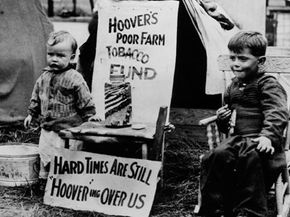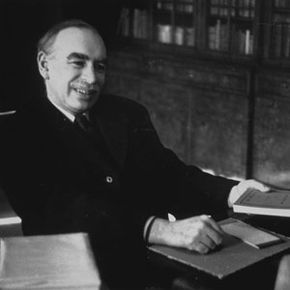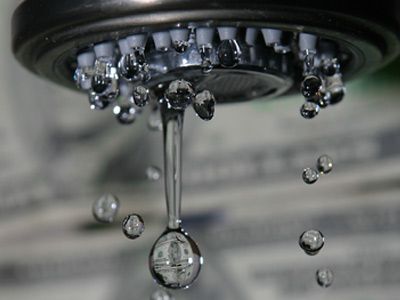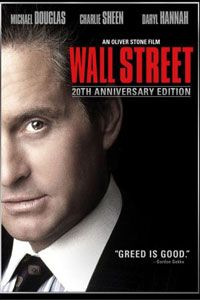When the Great Depression hit the United States in the 1930s, the country was battling the worst economic situation it had ever seen. Understandably, the sentiment at the time was that something needed to be done. The question was: What? The public turned to elected officials in Congress for some glimmer of hope. Suddenly, everyone revolted against the policies of the Roaring '20s that provided sweeping tax breaks for the top earners. It didn't feel right to let the rich off easy when people were starving in the streets. The idea that wealth would eventually trickle down to the needy was thought to be too slow a process -- if not completely bunk.
Some people still argue that giving tax breaks to the wealthy is sound economic policy. The idea didn't quite die with the Great Depression; rather, trickle-down economics resurfaced a few times since then. It enjoyed a strong resurgence in the 1980s under the Ronald Reagan administration in particular. Now, most people primarily associate trickle-down theory with Reagan's economic policies, known as Reaganomics.
Advertisement
Supporters of trickle-down theory claim that it is a sorely misunderstood philosophy. It certainly gets a bad reputation -- due in no small part to its name. Instead, proponents prefer to call it supply-side economics. By this or any other name, though, it's hard to convince the lower and middle class that tax breaks for the rich are a good idea. So what's the logic behind the theory that George H.W. Bush vilified as "voodoo economics?" [source: Kotlikoff].
Supply-siders believe that when the wealthy don't have to face high, debilitating taxes, their business endeavors will fuel the economy naturally in a way that benefits everyone. Thomas Sowell, one advocate of the theory, goes so far as to claim that although the tax cuts apply primarily to the wealthy, they benefit the working class first and foremost. He reasons that when the wealthy believe they can keep more of their profits, they will invest more in business (rather than save or consume). This investment goes to creating jobs for the working class, often long before the investor sees a return [source: Sowell].
This logic remains highly controversial. But were a nation to accept it as general policy, what do supply-siders propose we do during difficult economic times?
Advertisement



